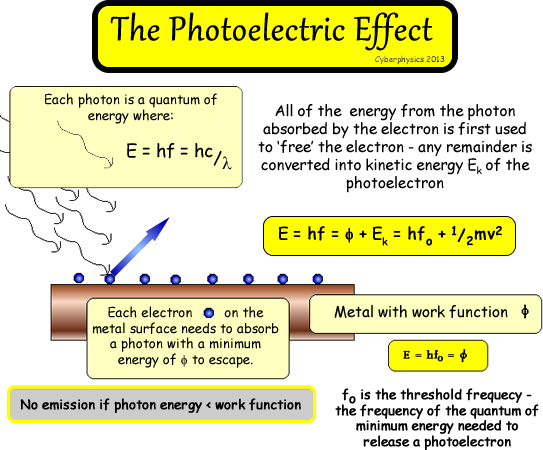The Gamma Camera
The gamma ray is electromagnetic radiation of very high penetration
power. Therefore more rays exit the body and are available for detection
than interact with the patient's tissue. These can be detected by a gamma
camera and the concentration of radioactive tracer in various parts of the
body can be ascertained.
Gamma rays cannot be focused by refraction
therefore a lead collimator is used to direct rays from a point on the
patient towards a single point on a sodium iodide crystal. The collimator absorbs
g-rays
emanating from other parts of the body before they activate the crystal.
Pin-hole Aperture Gamma Camera
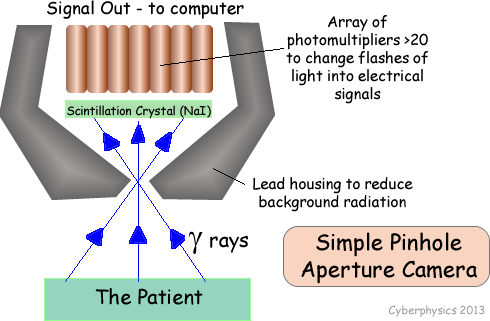
A crystal of sodium iodide fluoresces
when a gamma ray interacts with one of its orbital electrons, promoting
it to a higher energy level. On its return to ground state a photon is
emitted. If this energy is in the visible region a flash of light is seen.
This light is detected using a photomultiplier
(see diagram) which is a device in which incident photons create
measurable electrical pulses. The device is based on the photoelectric
effect (see diagram). It uses large electric fields to accelerate electrons
and, through a cascade sequence, amplify the signal.
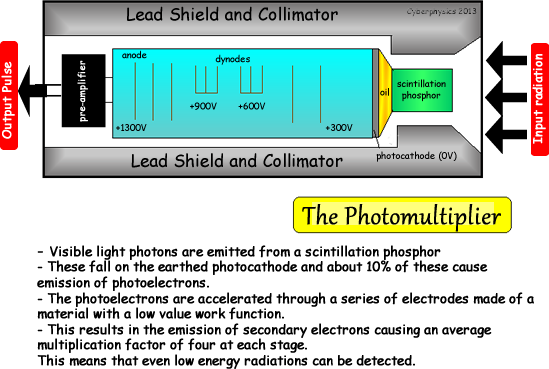
Gamma Camera employing parallel
hole collimation
- uses more radiation than pin-hole type
without losing resolution
- is ten times more sensitive when scanning
than a pin-hole type
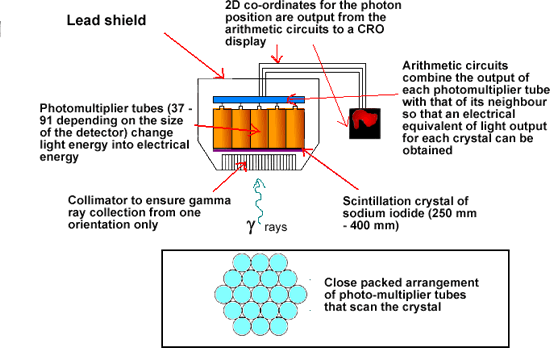
The gamma camera is made to scan the area
of interest approximately four hours after the patient has been injected
with the radioactive tracer. This gives it time to circulate and accumulate
in 'hot-spots' of rapid cell division. The second scan taken within the
24-hour period can then be compared to the first to diagnose suspicion
of overactive lymph node activity.
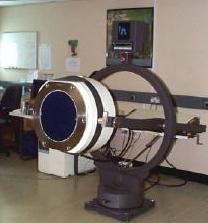
The camera display can be made on a monitor
and videoed. Hard copies of the scans can then be taken and compared.
Gamma camera scan
of kidneys
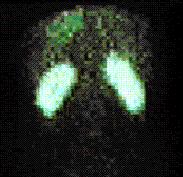
The electrical output can be translated into
colour coded graphical display using electronic circuitry.
Look at the Heart Gamma Camera Scan graphic - note the use
of colour to give instant visual recognition of variations in concentration Scanning is programmed electronically
so that the area of interest is looked at. The chemical is chosen because
it takes part in a normal biological function of the lymphatic system
any slight abnormalities in function can be identified by comparison of
the two scans. Current experimentation with a tiny probe containing a
miniaturised gamma camera, hopes to combine keyhole surgery with nuclear
medicine and hence reduce the risk due to exposure dose of the patient,
making more frequent scans a possibility.

